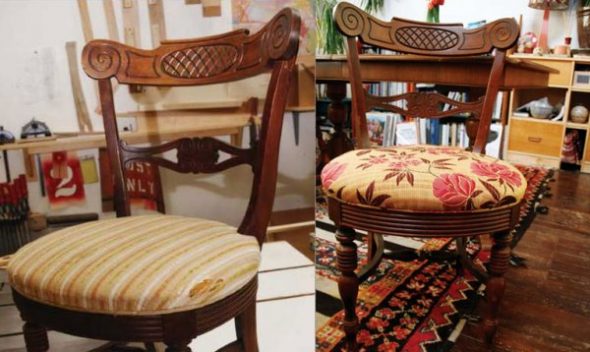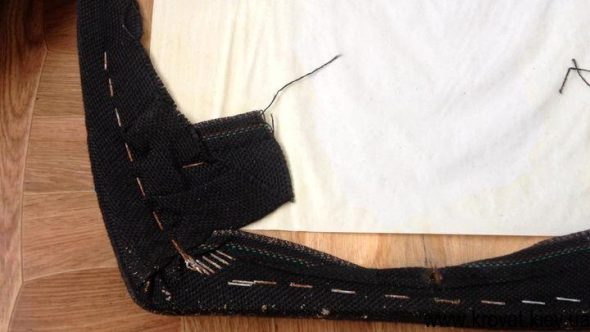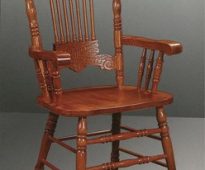 From the stool to the transformer chair - learn to make chairs with your own hands
From the stool to the transformer chair - learn to make chairs with your own hands
Doing hauling chairs with their own hands
Most of us do not often change the furniture: the familiar interior creates a special atmosphere of comfort and warmth. There are other explanations for this - to acquire a new “atmosphere”, as they said before, is not cheap. Therefore, many home craftsmen are trying to update their favorite, but lost their appearance and the elements of the interior that have been shaken from time to time and restore them by hand. But even if there is no experience of such work, you can learn how to repair the furniture yourself, and you can start better with the restoration and stretching of the chairs.
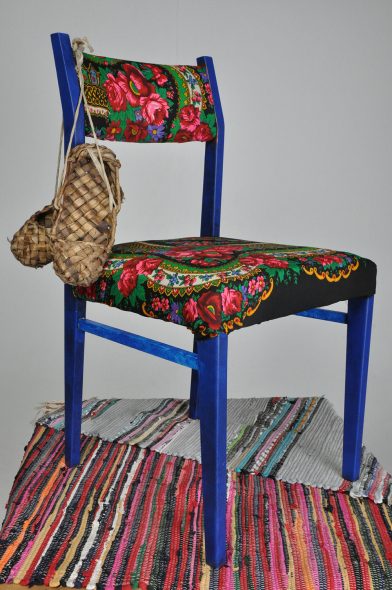
In self-restoration of furniture has its advantages.
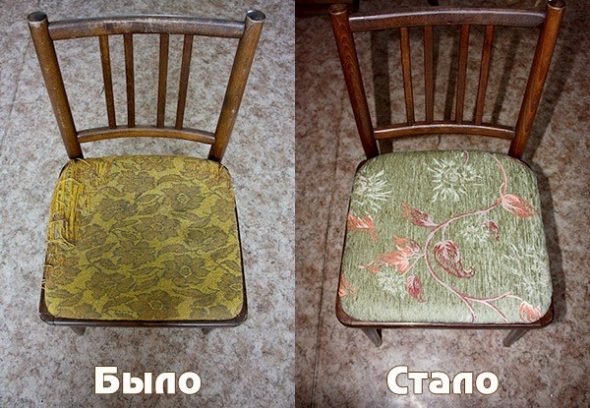
It is important only to be attentive and careful, and to observe safety precautions.
Content
Advantages of self-tapping
In self-restoration of furniture has its advantages:
- the acquisition of repair skills;
- the ability to choose the best material for upholstery;
- budget savings;
- the joy of self-accomplished work.
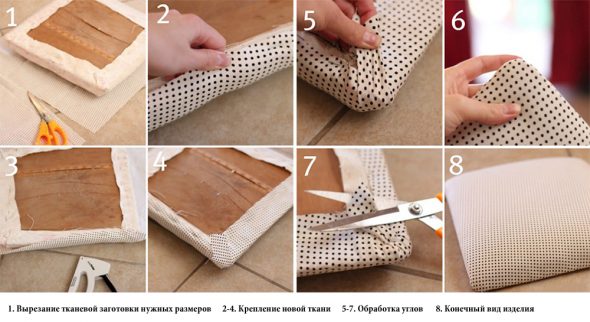
Padding of chairs is a convenient moment for making changes in the design or design of chairs.
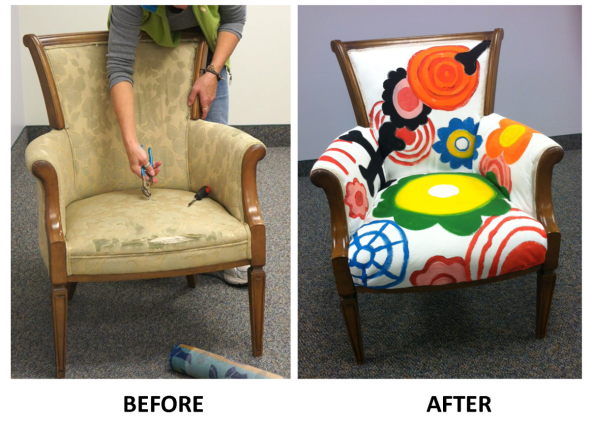
When you have prepared all the tools and materials, you can begin to work on the reconstruction and constriction of the chair.
We are determined with the design and construction
Padding of chairs is a convenient moment for making changes in the design or design of chairs. To add a touch of freshness and beauty, you can pick up fabric for Russian upholstery in Russian motifs, for example, “under Khokhloma”. Worsted handkerchiefs are used for this: they are bright, beautiful, durable. For the nursery, it is also possible to choose the appropriate color tapestry or other fabric, which is used for coating. Chairs with smooth colored upholstery are interesting: they bring a sense of joy and happiness into the interior of the apartment. You can change the design of the chair, removing or, conversely, adding armrests, changing the configuration of the back, etc.
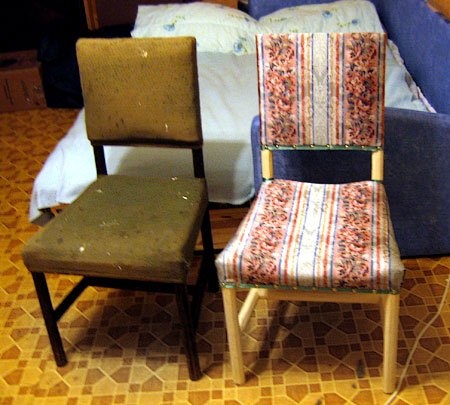
You can also change the design of the chair, removing or, conversely, adding armrests, changing the configuration of the back, etc.
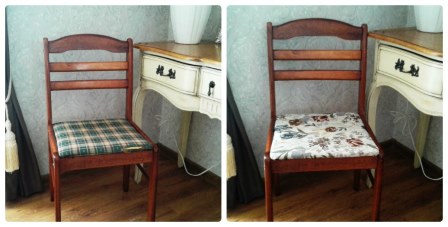
The update process begins with dismantling.
Necessary materials
To get started, you need to pre-purchase the necessary materials. The list of them in each case may differ, but there is a list that is always used. It includes:
- upholstery fabric (the master will choose its taste and color in accordance with the design of the apartment);
- filler;
- thick paper or cardboard for the manufacture of patterns;
- PVA glue.
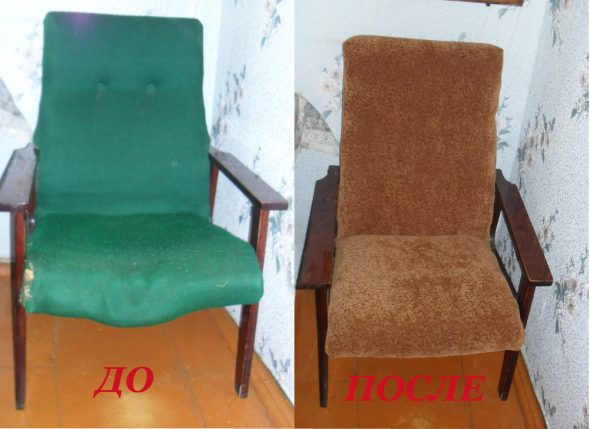
To add a touch of freshness and beauty, you can pick up fabric for Russian upholstery in Russian motifs, for example, “under Khokhloma”.
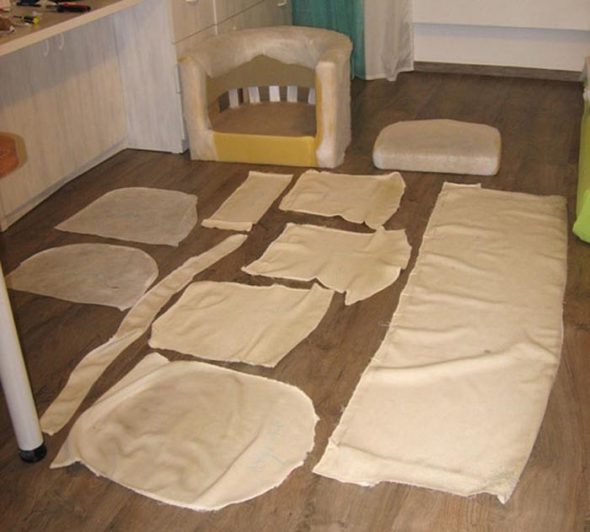
Connections that have already weakened, you need to tighten.
| Type of material | Features |
| Fabric for waist | The most popular fabric is the tapestry, featuring a good density and variety of colors. Jacquard, flock or chenille, as well as leatherette, are also used for the waist.
|
| Filler | As a filler the synthetic winterizer or foam rubber in sheets is convenient. Both materials are dense, but quite soft. The pattern can be made of thick paper, but it is better to use a thin cardboard, flexible, but not crumpled and not broken.
|
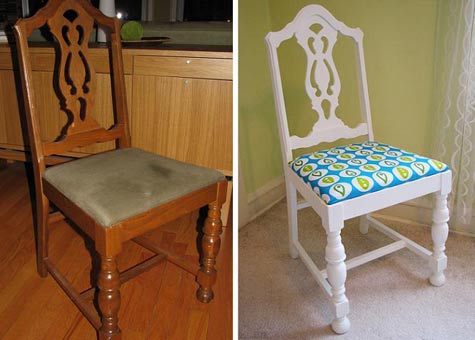
Chairs with smooth colored upholstery are interesting: they bring a sense of joy and happiness into the interior of the apartment.
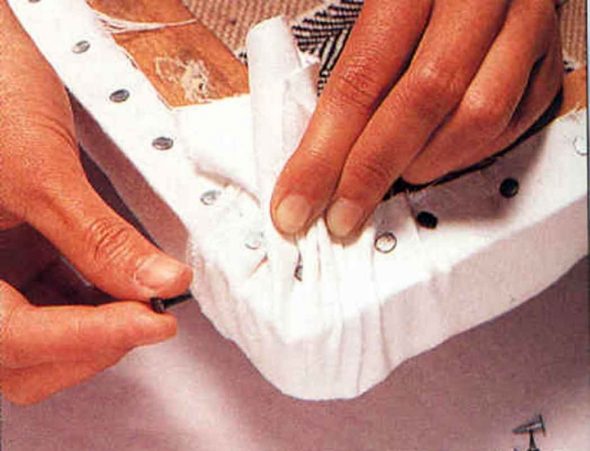
If the bottom of the chairs is made of plywood, then, depending on the condition, it can be completely replaced or removed the traces of the old filler and glue.
Council Any glue can be chosen, at the discretion of the master, but PVA is safe, does not contain toxic elements, and after drying does not leave dirty marks. True, it must be borne in mind that this should be a special building, and not a clerical PVA.
To get started, you need to pre-purchase the necessary materials.
While the frame dries, you can make a piece and cut the fabric for upholstery.
What tools are needed
The process of hauling chairs consists of several operations, so for each one will need its own set of tools:
- nail puller
- furniture stapler
- mallet
- scissors
- bit
- pliers and screwdrivers
- scissors or a large stationery knife, centimeter tape
- ruler, pencil, crayons for marking.
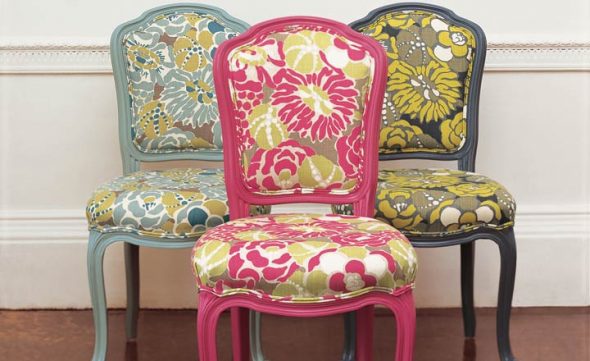
The most popular fabric is the tapestry, featuring a good density and variety of colors.
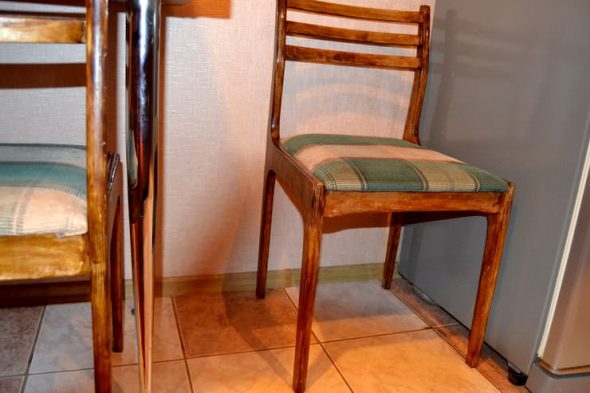
By the size of the seat, the filler is cut with a stationery knife or scissors, and the upholstery for the waist of the chairs is adjusted for the allowance.
The set is small and does not require special training to handle them. It is important only to be attentive and careful, and to observe safety precautions.
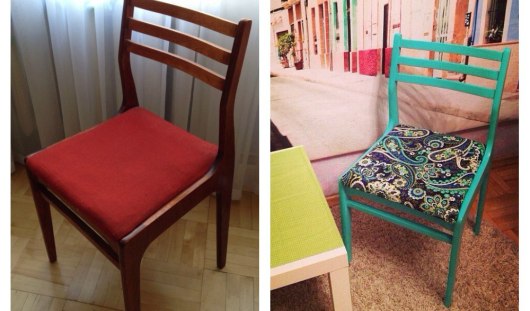
As a filler the synthetic winterizer or foam rubber in sheets is convenient.

Once everything is prepared, you can proceed directly to the waist of the chair.
Manufacturing process: step by step instructions
When you have prepared all the tools and materials, you can begin to work on the reconstruction and constriction of the chair.
- The update process begins with dismantling. Turning a chair, you need to open and remove the old attachment. This should be done slowly, very carefully, so as not to spoil parts of the furniture.
- Now the framework and its integrity are checked. Connections that have already weakened need to be tightened; if cracks are found, they are glued, and for sticking to be strong, parts are tightened with collars for several hours.
- If the bottom of the chairs is made of plywood, then, depending on the condition, you can completely replace or remove the traces of the old filler and glue, walk with sandpaper, and then coat with wood stain or acrylic paint.
- While the frame dries, you can make a piece and cut the fabric for upholstery. The pattern is very simple: the seat needs to be cut around with a pencil and an allowance of seven to ten centimeters from each side should be made. Done! By the size of the seat, the filler is cut with a stationery knife or scissors, and the upholstery for the waist of the chairs is adjusted for the allowance.
- Once everything is prepared, you can proceed directly to the waist of the chair.
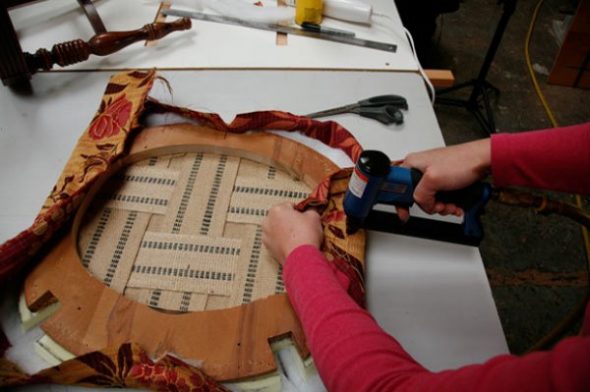
The pattern can be made of thick paper, but it is better to use a thin cardboard, flexible, but not crumpled and not broken.

After complete drying, attach fabric upholstery: it is laid out on the wrong side, and a seat is placed on it.
Its order is as follows:
- glue the filler to the plywood seat;
- after complete drying, attach fabric upholstery: it is laid out on the wrong side, and a seat is placed on it;
- fasten tightly stretched fabric with a furniture stapler;
- excess fabric trimmed with scissors;
- set the seat on the frame.
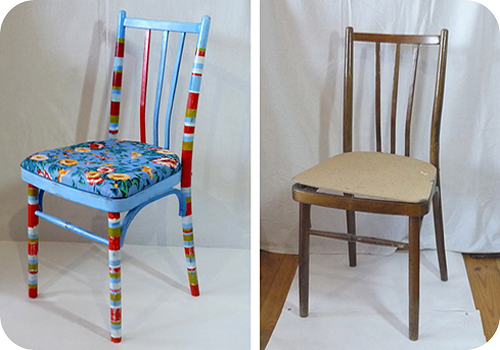
Any glue can be chosen, at the discretion of the master, but PVA is safe, does not contain toxic elements, and after drying does not leave dirty marks.
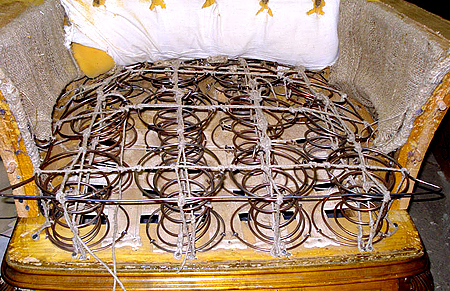
When the main restoration work is completed, and the hauling of chairs is completed, you can start decorating.
The final stage is decorating
When the main restoration work is completed, and the hauling of chairs is completed, you can start decorating. Depending on the available materials and aesthetic preferences, here is a full scope of imagination. To decorate the back of a chair fit:
- decoupage wipes;
- ornaments made of wood using a jigsaw and glued with construction glue;
- drawings made by home craftsman’s hand, or made from patterns and painted with acrylics.
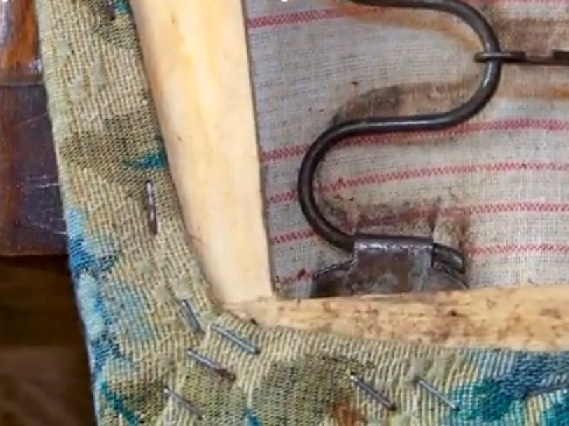
The process of hauling chairs consists of several operations, so for each one will need its own set of tools.
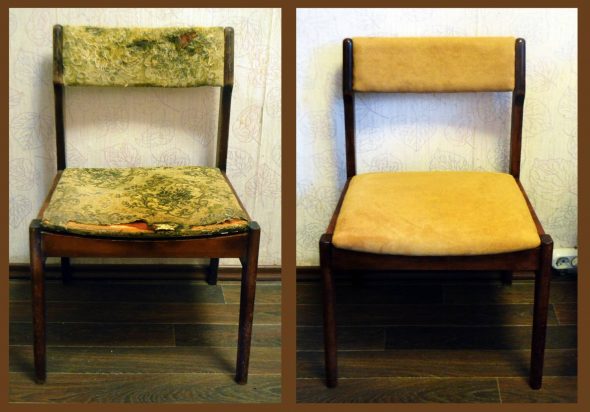
Drawings on fabric, hand-painted by a house craftsman or made from a pattern and painted with acrylic paints.
They will give your favorite furniture a new life and make the apartment unique.
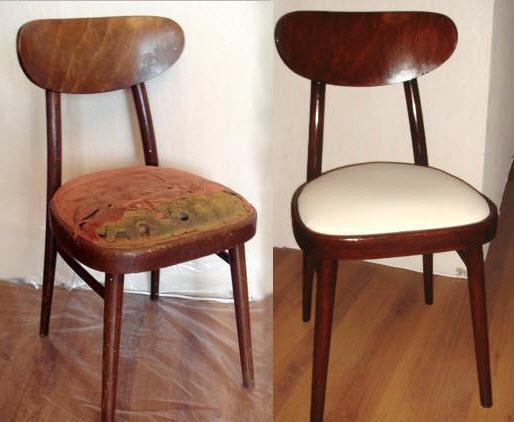
They will give your favorite furniture a new life and make the apartment unique.
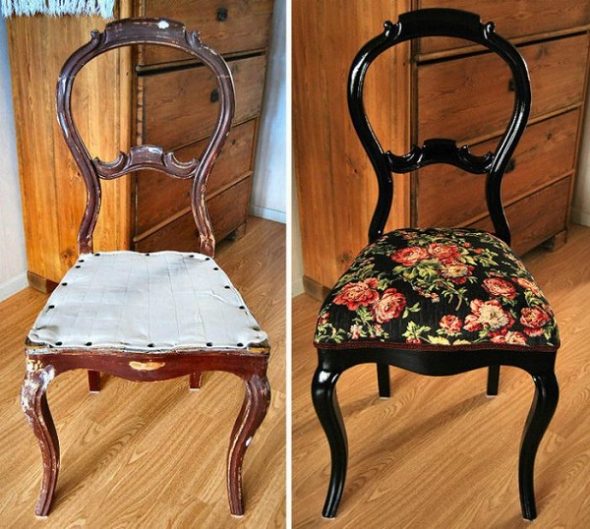
Even if there is no experience of such work, you can learn how to repair the furniture yourself, and start better with the restoration and constriction of the chairs.
VIDEO: Padding chair. Master class from the workshop Kraftman. 8 (495) 506-01-24 kraftman.ru
 From the stool to the transformer chair - learn to make chairs with your own hands
From the stool to the transformer chair - learn to make chairs with your own hands
 How to pull a chair with your own hands
How to pull a chair with your own hands
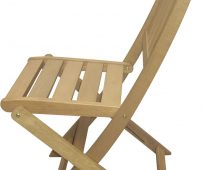 How to make a folding chair with your own hands
How to make a folding chair with your own hands
 How to make a growing chair "Humpbacked Horse" with your own hands
How to make a growing chair "Humpbacked Horse" with your own hands
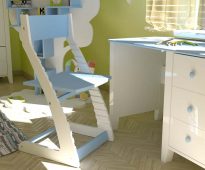 A chair that grows with a baby: what is it?
A chair that grows with a baby: what is it?
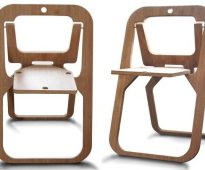 How to make a folding chair out of plywood do it yourself: step-by-step instructions for making
How to make a folding chair out of plywood do it yourself: step-by-step instructions for making
